Cassowary Meat in Local Food Traditions
38 min read Explore cassowary meat’s role in Papua New Guinea’s Highlands: ceremonial uses, mumu preparation, community taboos, and modern conservation perspectives shaping these enduring food traditions. October 28, 2025 07:07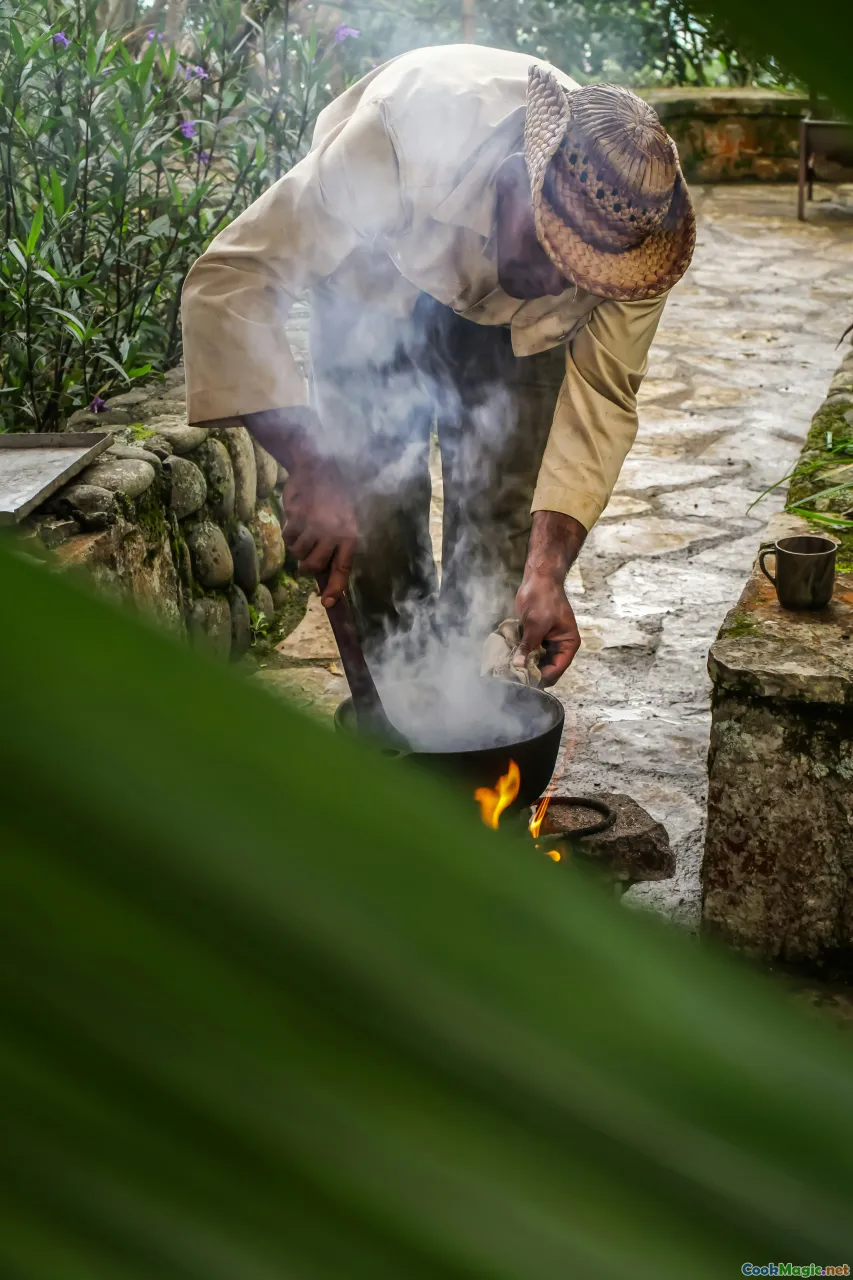
The first time I tasted muruk—the Tok Pisin word that snaps at the tongue like a twig underfoot—I was standing beside a smoking earth oven on a slopeside garden path in Papua New Guinea’s highlands. Rain had just brushed the pandanus leaves, and the world smelled of peppery green stems and the sweet, wet ash of burnt wood. The mumu pit hissed like a sleeping animal. Hot stones clicked beneath a bundle the size of a carry-on suitcase: banana leaves layered with sweet potato and taro, a halo of pitpit stalks, and, at the heart, cassowary meat rubbed in wild ginger and the ash-salt a local auntie rendered from burned ferns. When the leaves unwrapped and the thermal breath lifted, the forest stepped forward: a deep, iron-tinged aroma, gamey but clean, familiar as seared beef and yet edged with the wild. I remember the meat’s color—wine-dark, the sheen of it—and the way it yielded in long, silky fibers.
I had heard stories long before that afternoon. Cassowaries move like ideas through Papua New Guinean culture: dangerous, prized, stubbornly their own. You don’t meet one, you learn its perimeter. Yet at feasts, in old tales, in the geometry of bridewealth, muruk has also fed people—physically, spiritually, and socially. As cooks and eaters, we can pay attention to that wide circle: the flavor, the technique, the careful etiquette of the cut, and the habit of respect that surrounds such meat.
Names, Myths, and Meanings of Muruk

In markets and conversation across PNG, cassowary is “muruk,” a word that carries weight. You’ll see its quills and feathers woven into bilas—the ceremonial finery of the Highlands—and its image carved into drums and storyboards along the Sepik River. In the dense montane forests, where cloud and canyon conspire to keep secrets, you can hear the bird’s heavy rasp as it patrols underlayer paths. People tell children to keep distance; they show the hooked claws in the air and rake a warning through the fern.
Cassowaries are ratites, kin to emu and ostrich. Three species stride across New Guinea and northern Australia: the southern cassowary, the northern, and the dwarf. In Papua New Guinea, the dwarf cassowary threads through high-elevation forest, while the northern and southern birds run the lowland edges. For cooks and communities, the species matters less than the bird’s cultural standing. Cassowaries are wealth on legs. Chicks are sometimes captured and raised as semi-domesticated animals, not penned like pigs but tethered to the household’s future—exchanged at times of bridewealth, loss, or great celebration. In certain regions, their meat might be reserved for elders, or shared according to precise protocols that mirror those for pigs.
Myths vary by valley, but one story pattern recurs: a powerful woman becomes or befriends a cassowary, the forest’s guardian. In another vein, a man fails to heed a cassowary’s boundary and learns the price. Anthropologists have traded in the broad symbols—what the cassowary “means.” A cook learns something more tactile: when a feather shaft mixed with ochre steadies a headdress; when a bone, carved and polished, becomes a tool; when a bird’s life is taken, the meat is not just handed out but distributed with care, gratitude, and memory.
Where Cassowary Sits at the Table: Place-Based Traditions

Papua New Guinea is not a monolith, not socially, linguistically, or gastronomically. You can drive an hour and cross a line in what is eaten, how it is cooked, and who shares the first bite. Cassowary’s place at the table changes with elevation, road access, and clan history.
- In Sandaun (West Sepik), in the thickly wooded ranges near Telefomin, cassowary chicks are sometimes raised in villages, fed sweet potato peels and garden greens. A mature muruk can anchor a rare, significant mumu. Families might combine its meat with lumps of taro and wild greens, then bundle it in layers of banana leaves. Inside the bundle you might find slices of ginger and crushed native herbs that smell like bruised citrus and pepper.
- In the lower Sepik, where sago is a staple, meat is often stewed with sago dumplings or served alongside steamed sago cakes. In stories from elders near Angoram and beyond, cassowary meat appears as part of a guest feast: a woven-leaf plate gleaming with dark meat, palm-smoked and glossed with melted fat from added pork or coconut cream.
- In the Southern Highlands and Hela Provinces, where feasts revolve around pigs, cassowary is rarer and thus charged with meaning. It may be present only at events of great significance, used to honor or to remember, not as an everyday protein. When it is shared, the distribution of individual cuts follows existing patterns of kin and obligation.
- In Morobe or Oro’s forest borders, hunters and gardeners trade. Village women may bring dried strips of cassowary meat to market along with aibika bundles, lemons, and betel nut. The dried meat—smoky, black at the edges—can perfume a pot the way a ham hock does, making broth both richer and darker.
Each of these cases is a sketch. The real variations are endless. But wherever muruk appears, you will find a logic of stewardship. People talk about the bird’s danger and beauty, they debate hunting, they raise chicks in ways that tether a household to the forest. The meat is never “just meat.” It has a story before you smell the steam.
The Taste of the Forest: What Cassowary Meat Is Like
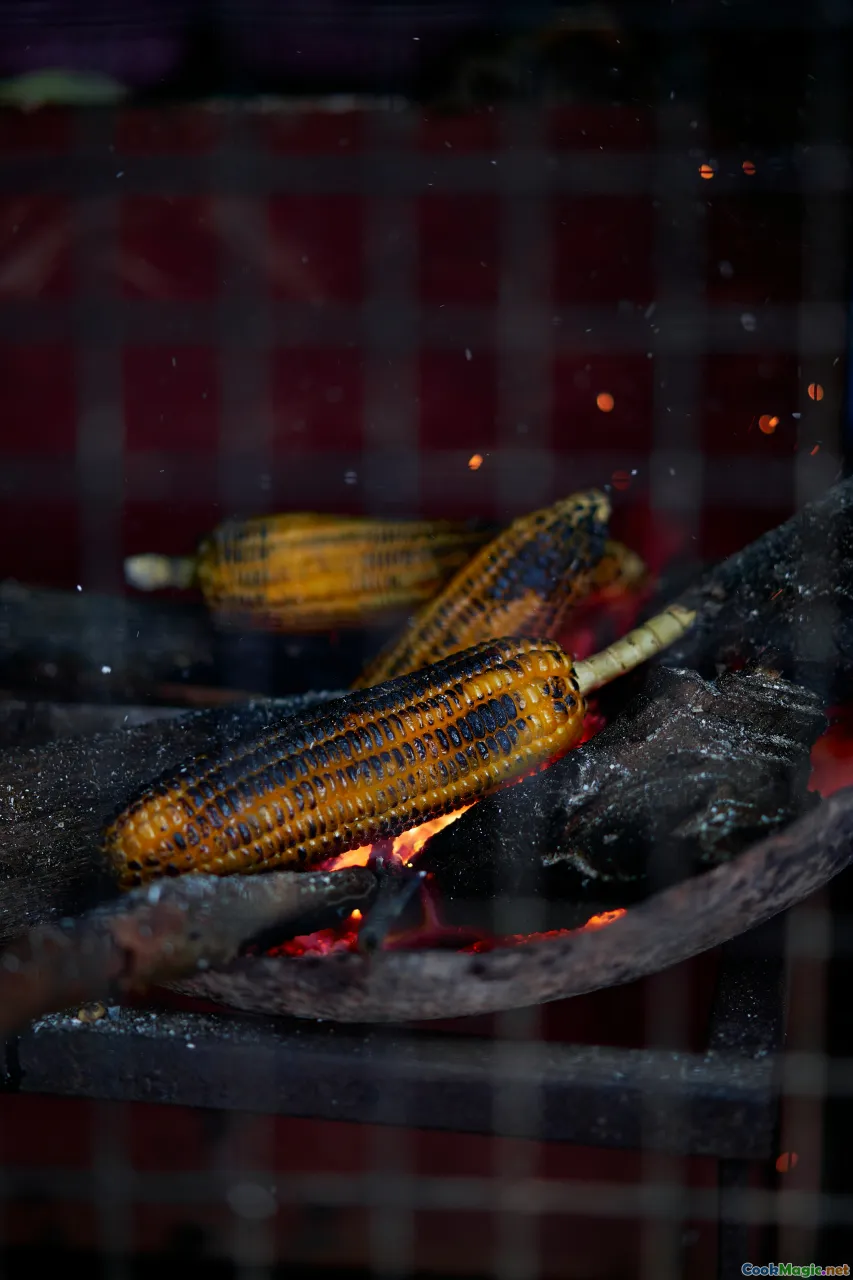
Cooks measure animals in muscle and memory. Cassowary, as meat, lives in the register of red. Imagine the iron-rich perfume of seared beef, the lean density of emu or ostrich, and the subtly resinous depth that wild game can carry when it feeds on fallen fruit and leaves. Cassowary tastes like that. Some cooks call it a bridge between venison and duck: the minerality of the former, a silk-thread hint of the latter’s depth, without the fatty cushion duck carries under its skin.
- Color and texture: Raw cassowary is a deep maroon. The muscles are long-fibered and very lean. On the plate, cooked properly, the fibers separate in ribbons, like a well-braised beef shin.
- Fat and moisture: There is very little intramuscular fat. Without the cushioning fat of pork or duck, cassowary can go from supple to dry in a breath. Traditional cooking methods account for that. Pit steaming in banana leaves keeps moisture in; bamboo-tube stewing creates a living broth.
- Aroma: When you lift the first piece to your face, the scent is of clean smoke, wet leaves, and iron. If wild ginger and chilies have been used, they line the nostrils with sweet heat. Any coconut cream added will bloom the scent like a floral top note.
- Flavoring friends: Aibika greens, with their silky, almost slick texture, wrap around cassowary’s long fibers in a pleasing contrast. Pitpit stalks lend a grassy snap. Taro steadies it. In coastal or riverine kitchens, sago acts like a sponge—unevenly chewy, comforting, able to carry the meat’s juice.
The common pitfall in cooking muruk is speed. If you treat it like chicken and give it a quick, dry blast of heat, it stiffens defensively. If you treat it like the forest—low, humid, patient—it answers with gentleness.
Story From a Mumu: A Cook’s Memory in Telefomin
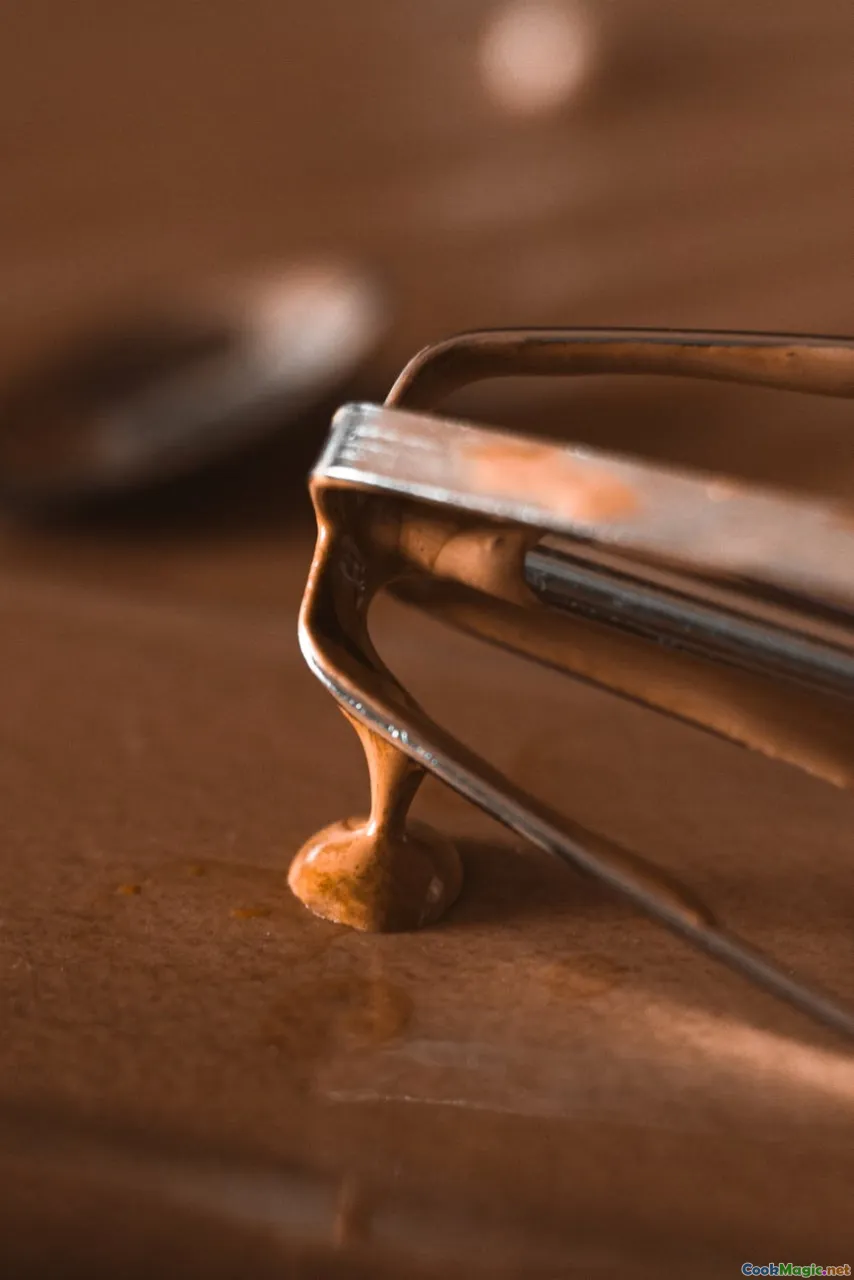
We had been walking an hour under cloud when we rounded into the clear: a garden patch carved from slope, a rough bench, the digging sticks stacked like an altar. Here the women were making mumu. Stones heated in a fire lay reddening, breathing heat. Banana leaves flexed their ribs over the bundle. One of the men laughed as he showed me an ash-salt cake—cold, gray, impossible jewel—made by leaching the ashes from burned plant stems and boiling the liquid until the mineral crystallized. Before coastal salt became commonplace, this was the mineral that woke food up.
In the bundle: kaukau (sweet potato) in big chunks, taro steamed until glossy, and a small feast’s worth of muruk, the pieces rubbed with wild ginger root and that ash-salt. The eldest woman—she was the conductor—laid down the laws of touch: which leaves to fold first, where to put the stones so the heat would climb, how many breaths to wait before adding greens so they would stay vibrant instead of dissolving. The smell of banana leaf—green, custard-sweet—filled the air, then melted into the deeper smell of meat.
When we opened the mumu, a hush. The first piece of muruk went to a relative who had walked from a neighboring hamlet. Plates were woven leaves. The meat pulled in long strips; the outside bore the nickel-dark shining of smoke, the inside still pinkish, silky. It tasted like the hillside looked—rooted, wet, resilient. Someone poured a splash of coconut cream over a twist of aibika, a little luxury. We ate with our hands. Ginger warmth climbed the palate. Taro humbled everything.
I learned more from watching distribution than from eating. The way the women cut and decided told a story of who had labored, who had skin in this feast, who was almost family and who was visitor. They counted with their eyes, and the division was both mathematics and mercy. Only later, when we walked back under the mist, did I realize I could still smell the mumu—on my hands, in my hair, like a reminder that the forest feeds not only bodies but obligations.
Technique: Cooking Muruk the Traditional Way (and at Home)

Cassowary has been cooked for generations without stainless steel or sous vide patches. The techniques that make it tender are simple, ingenious, and adaptable.
Traditional mumu (earth oven) method:
- Heat stones. Build a fire and nestle fist-sized river stones into the coals. Heat until they glow or throw off a steady heat when held near your palm.
- Prepare the bundle. Lay down banana leaves, overlapping to form a wide mat. Add a layer of greens (aibika leaves or taro leaves), then chunks of kaukau and taro, then the meat rubbed with salt and wild ginger. Sprinkle sliced chilies if appropriate. Some cooks add coconut cream late, just before wrapping, to baste the meat.
- Layer and insulate. Add more greens and a final coat of banana leaves. Place heated stones above and below the bundle. In wet country, the bottom of the pit is lined with leaves to stop the bundle from sitting in mud.
- Seal and wait. Cover with soil to trap steam. Cook times vary with size, but a large bundle can steam for 1.5 to 3 hours.
- Serve immediately, keeping the leaf packet intact until the eaters are ready. The packet is its own cloche; lifting it is the feast’s drumroll.
Bamboo-tube stewing:
- Select thick bamboo culms. Slice sections into tubes and stuff with cubed meat, a handful of garden aromatics (ginger, spring onions, lemon leaf if you have it), a pinch of salt, and a splash of water or coconut milk.
- Seal the top with leaves or a banana-leaf plug. Tilt the tube near the fire and rotate. The bamboo releases its own tannic perfume. Steam collects and bastes the meat. This method produces tender morsels with a faintly grassy sweetness.
Home-kitchen adaptations and substitutes:
- If you are outside PNG or cannot legally or ethically source cassowary meat, use emu or ostrich steaks, or very lean beef (top round, eye of round) cut into large chunks. Duck legs can stand in for the tenderness and glow of wild flavor if cooked low and slow.
- Banana leaves can be found in many Asian and Pacific grocers. If none are available, parchment paper under foil approximates the steam-trap and imparts a clean, slightly sweet smell; layering greens like collards or Swiss chard under the meat helps replicate the leaf flavor.
- For moisture, treat the meat like a braise. Brining lean red meat (1.5% salt by weight in water, with a slice of ginger, for 2–4 hours) supports juiciness. In lieu of plant-ash salt, use flaky sea salt and a whisper of baking soda (a pinch per kilogram of meat) to raise pH slightly and enhance browning—sparingly; this is chemistry, not an excuse to flatten flavors.
- Oven mumu: Wrap meat and roots with aromatics in banana leaves, then foil. Bake at 160°C/320°F for 2–3 hours, until the meat shreds. Unwrap and baste with coconut cream for the last 10 minutes to gloss.
The guiding principle is humidity plus time. The wrapping is not garnish; it is the technology.
Ingredients and Pairings From the Garden and the Bush
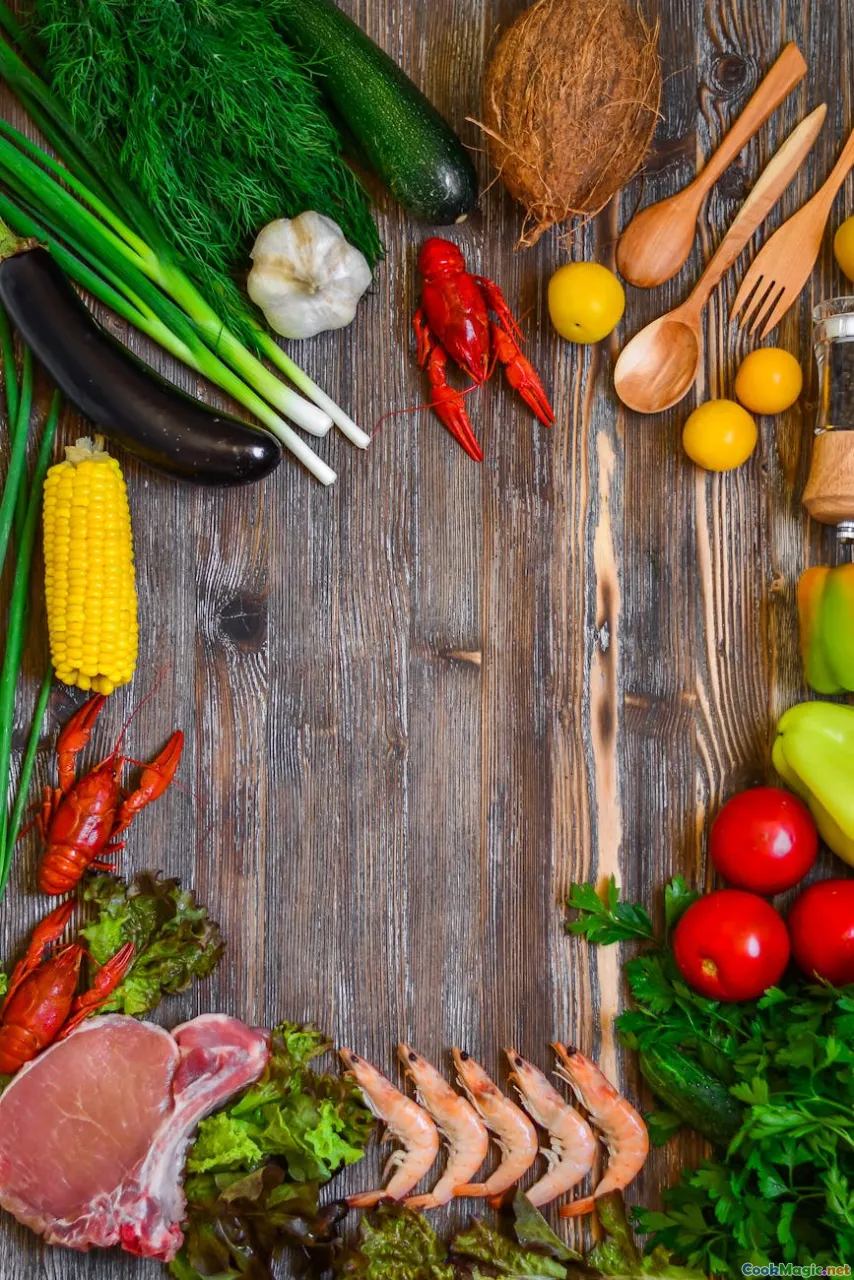
Cassowary’s flavor is amplified by the company it keeps. Across PNG, the garden is a larder and a field notebook.
- Kaukau (sweet potato): The mountain’s bread. Orange or white-fleshed, it absorbs meat juices and anchors the meal.
- Taro: Dense, fragrant, slightly perfumed, it turns silky when steamed in a leaf packet.
- Aibika (hibiscus manihot): Leaves melt into satin in heat. Gently slimy in the most comforting way, they gloss the shredded meat.
- Pitpit (Saccharum edule): A wild cane; peel the tender core and steam for a crunchy, fresh counterpoint.
- Wild ginger: Hotter than supermarket ginger, less citrus, more pepper. Sliced thin, it perfumes the bundle from within.
- Chili: Small, hot bird’s eye types appear in gardens; a few slivers defog the earthiness.
- Greens (kumu): From pumpkin tips to fern shoots, these greens bring bright, garden-bitter notes.
- Coconut cream: Not always traditional in highland kitchens but common in lowland and coastal cooking. A ladle of cream turns the broth from clear to opalescent and rounds the meat’s edges.
- Sago: In river places, sago dumplings or steamed cakes are the starch companion. They chew back, and that soft resistance pairs with long meat fibers.
Condiments are few in the Western sense. Often the seasoning is the leaf, the stone, the ginger, the salt. If there is a hot relish, it may be simply chopped chili with a squeeze of lime—a bright, stinging punctuation.
Feast Etiquette and Sharing Protocols

A feast in PNG is a social equation. Cassowary, because of its value, often intensifies the math. Distribution can reflect seniority, the line of invitation, the line of labor, and the pattern of exchange relationships that the feast renews.
- Who eats first? Often elders, honored guests, and those who brought or raised the muruk. Children may be handed smaller, softer pieces early.
- What gets shared? The long muscles become shareable strips; the best pieces may be given intact to signify respect. Bones matter too; they can be boiled later, and the cook may claim them by custom.
- How does one receive? With both hands. Many communities prefer you to wait until a signal—an eye, a word—before you begin.
- Leftovers? Rare. If any remain, they go home in bilums, the handwoven string bags that carry gardens and lives.
It is not just etiquette; it is memory. If you are a visitor, pay attention and listen. The moment of serving is part of cooking.
Preservation, Trade, and Value
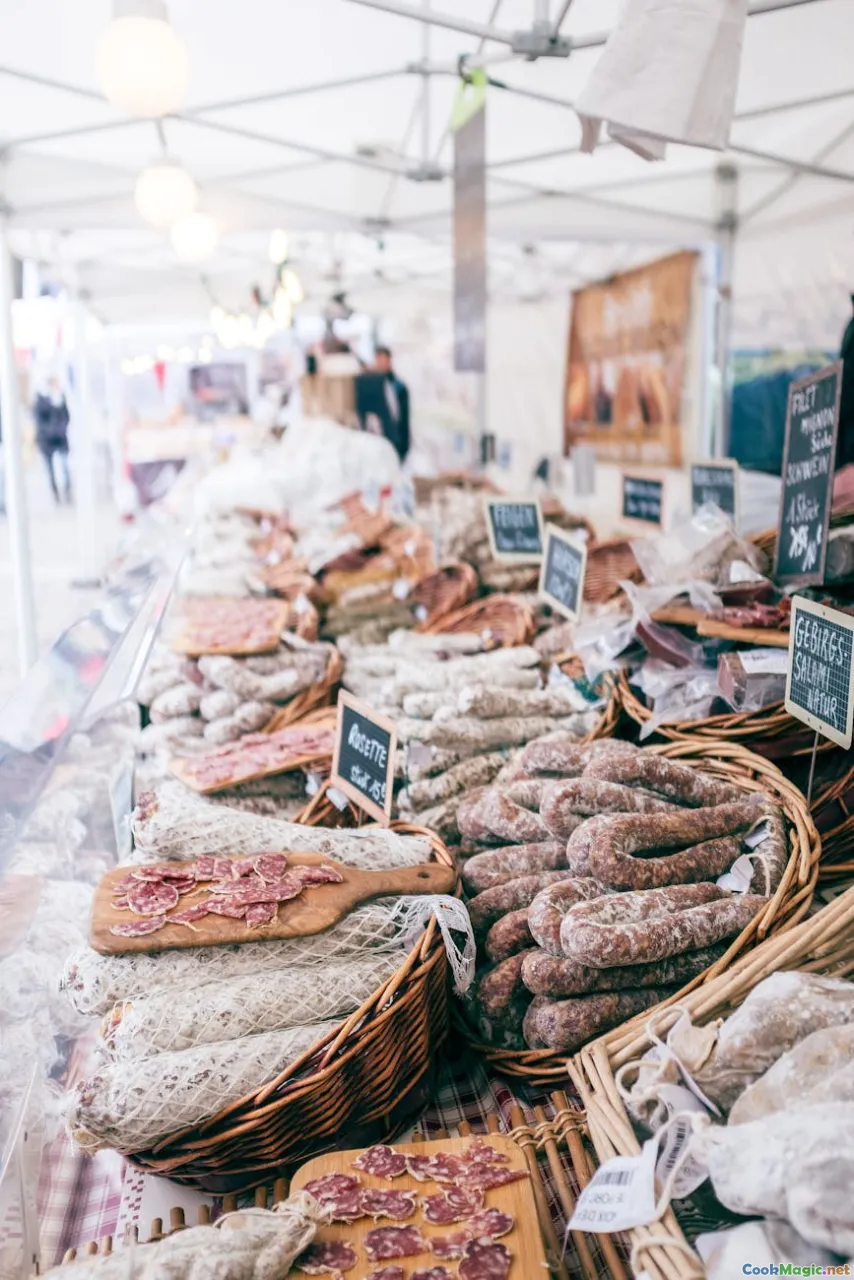
Before refrigeration, the forest’s proteins traveled through time by smoke, salt, and sun. Cassowary meat can be cut into thin strips and smoked over a small fire, hung high in the house near the ridgepole. The smoke is not merely a preservative; it seasons the meat like long patience seasons a story. Dried strips, almost black, can be simmered back to tenderness, flavoring a pot of greens or sago.
In some market towns—Mount Hagen on a busy day, smaller markets in Morobe’s foothills—you will see smoked meats for sale alongside greens, limes, and betel nut. Where wildlife laws allow, and where customary norms are in collaboration with conservation, cassowary may appear on the mat among the pork and freshwater fish—but more often, its presence is rare, a hint rather than a heap.
The value of cassowary is not merely caloric. A chick can be a living savings account. It requires food and care—a household investment—and it can move through exchange networks, converting care into social capital. The meat, when finally cooked, thus represents a long ledger of labor, lineage, and restraint.
Sustainability and Law: Cooking With Care
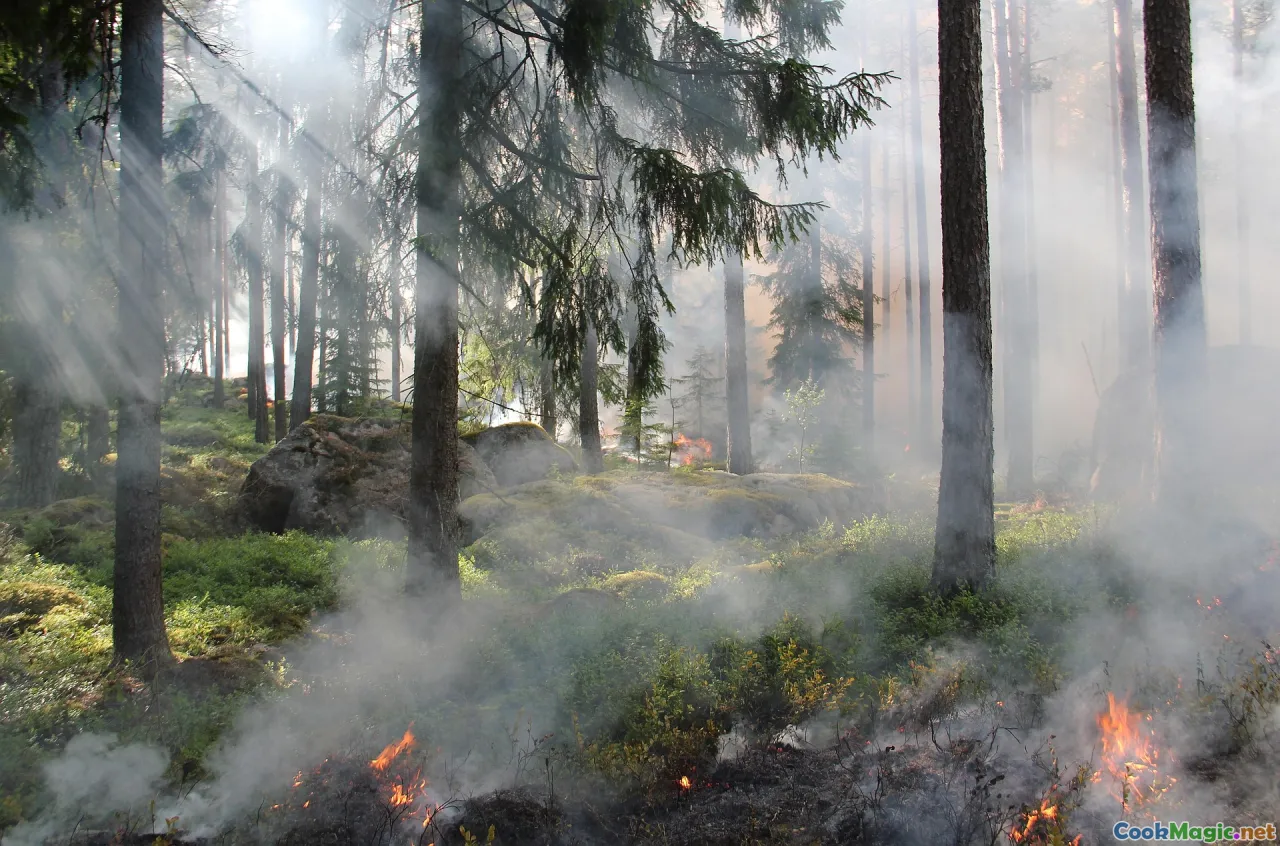
Cassowaries are iconic, ecologically crucial birds. They move seeds across the forest, keeping the canopy diverse, and they need large, intact territories. In some parts of PNG, hunting is strictly regulated or prohibited; in others, customary management creates rotating periods of taboos and release, or encourages raising chicks to lessen pressure on wild birds. Conservation areas—such as Wildlife Management Areas in different provinces—often set specific rules for taking or trading bush meat.
If you are a cook traveling in PNG, ask questions. Buy meat from legal, local, and trusted sources. If you are outside PNG, do not seek cassowary meat; it is typically not available legally. Instead, cook the flavors and methods. Use emu, ostrich, duck, or lean beef as stand-ins. Celebrate the technique and the taste memory without putting pressure on wild populations.
The best respect a cook can show an animal—especially one as storied and slow-breeding as a cassowary—is to cook in ways that honor its life. That means using the whole piece, sharing well, and keeping your sourcing aligned with law and local wisdom.
Comparing Cassowary to Emu, Ostrich, Beef, and Duck
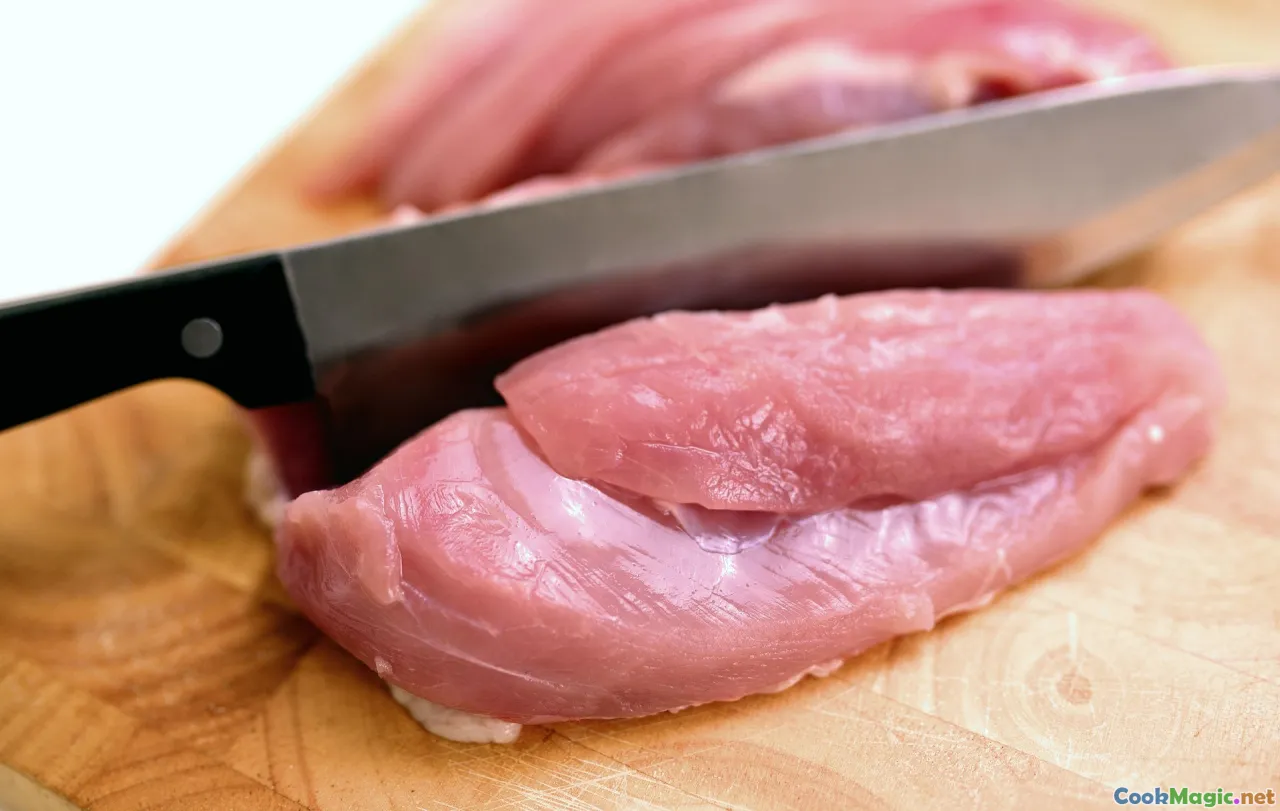
For culinary readers looking to translate PNG’s cassowary traditions into a home kitchen, smart substitution is an art.
- Emu: Very lean, deep red, fine-grained. Best match for cassowary’s texture and flavor. Treat it as a braise or low-temperature roast, not a hot sear. Brine or marinate lightly; steam-bake in leaf packets if possible.
- Ostrich: Similar to beef in flavor and texture, lean. Use larger roasts and shred after slow cooking. Take care with doneness; medium is more forgiving than well-done.
- Beef (round, shank): Readily available. For cassowary-style dishes, choose cuts with long fibers and connective tissue. Moist cooking transforms them. Avoid highly marbled steaks; the goal is flavor alignment, not luxury.
- Duck legs: Not flavor-identical but emotionally similar: a dark meat with a strong signature. The fat can mimic the gloss that coconut cream adds in some PNG preparations. Braise legs with ginger, greens, and a handful of root vegetables, then shred into leaf wraps.
Flavor architecture: Cassowary and its substitutes take on aromatics like an old house takes on smoke. Ginger, chilies, and greens create a PNG scaffold; banana leaf brings a grassy vanilla to the room. Coconut cream is optional; use it as a painterly stroke, not a blanket.
A Cook’s Field Notes: Practical Tips

- Salt early and simply. Whether ash-derived or sea salt, season the meat ahead of cooking to carry flavor deep.
- Wrap like you mean it. Multiple layers of banana leaves create a steam-lock. If substituting, use two layers of parchment and a tight foil seal.
- Think in strata. In a mumu packet, put sturdier items (taro, kaukau) near the stones where heat is strongest. Tuck greens against the meat to baste it.
- Add coconut cream late. Too early and it may curdle or separate; a late pour turns into a glaze.
- Slice with the grain to shred. Cassowary’s long fibers pull beautifully; cut across to serve neat portions, with, not against, the natural texture.
- Keep the heat gentle. Oven work? 160–170°C (320–340°F) steady heat. Stove top? A trembling simmer, never a boil that flips fibers tight.
- Don’t skip rest. Even a braise benefits from a 10–20 minute rest in its own juices. The threads rehydrate and relax.
Recipe Sketches You Can Cook Tonight
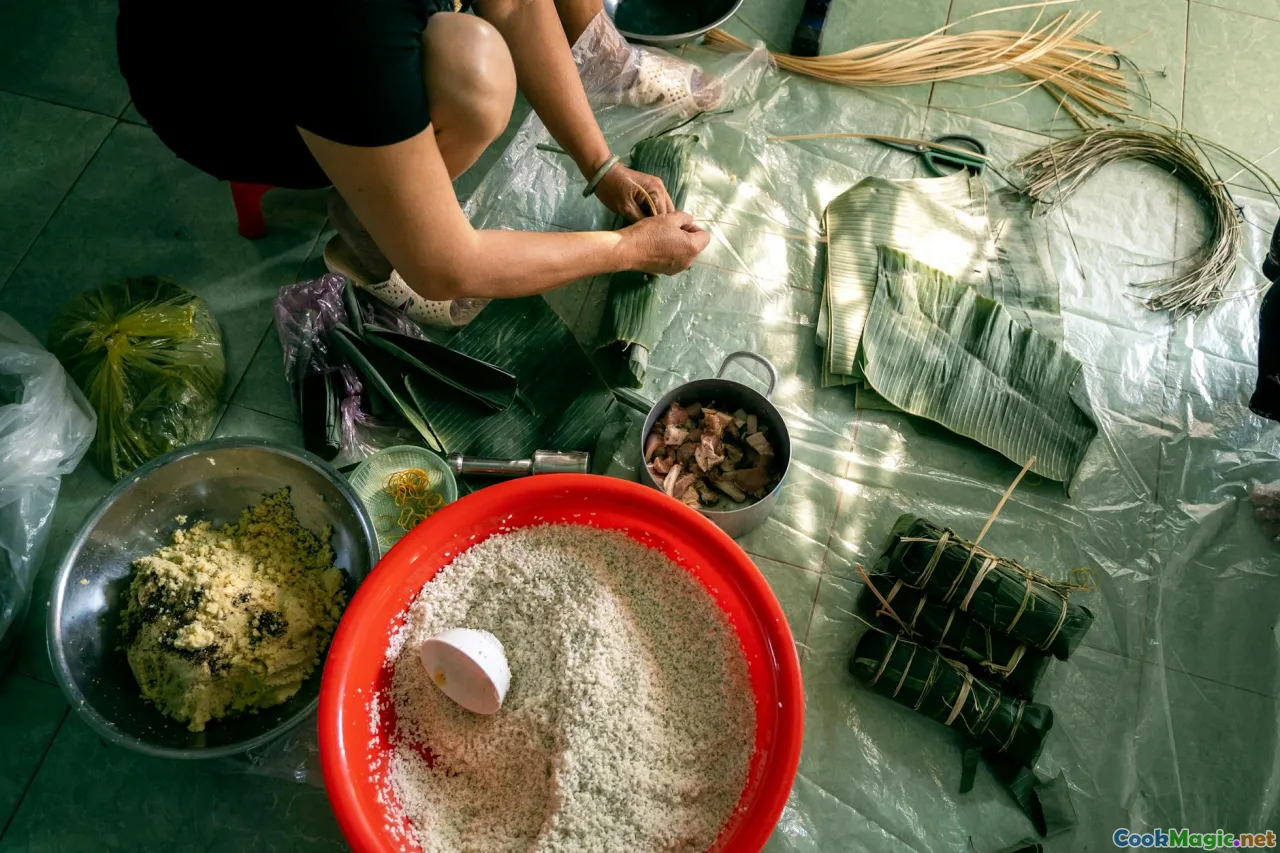
- Leaf-Wrapped “Muruk” With Kaukau (Emu or Ostrich Substitute)
Serves 6–8
- 1.5 kg emu or ostrich steak, cut into large chunks
- 1 tablespoon flaky salt
- 2 tablespoons grated fresh ginger
- 2–3 bird’s eye chilies, sliced thin (optional)
- 1 kg sweet potato (kaukau), peeled and cut into 5 cm pieces
- 600 g taro, peeled and cut into 5 cm pieces
- 2 bunches aibika (or substitute chard/collards), roughly torn
- 4–6 banana leaves (or parchment plus foil)
- 200 ml coconut cream (optional)
Steps:
- Season meat with salt and half the ginger; let sit 30–60 minutes.
- Soften banana leaves over a gas flame or hot surface until pliable. Lay two leaves crosswise to make a mat.
- Layer in this order: aibika, half the kaukau and taro, meat with remaining ginger and chilies, then the rest of the roots and greens.
- Drizzle 50 ml water. Wrap tightly. If using parchment/foil, wrap in two parchment layers then seal in foil.
- Bake at 165°C/330°F for 2.5 hours. Carefully open; pour coconut cream over the contents, re-seal, and bake 10 more minutes.
- Rest 15 minutes. Open at the table. Serve in leaf bowls.
Taste notes: The aromatics in the leaf condense into the meat. The sweet potato will be candy-sweet against the iron of the meat; ginger’s heat perfumes instead of shouts.
- Bamboo-Tube Stew, Stove-Top Variation (Beef or Duck)
Serves 4–6
- 1 kg lean beef (round) or duck legs (skin on)
- Salt
- 1 thumb wild or regular ginger, sliced
- 4 spring onions, chopped
- 2 cups chopped aibika (or spinach)
- 400 ml coconut milk (optional)
- 1 banana leaf, torn, or a handful of lemon leaves
Steps:
- Salt meat and let sit while you prep. If using duck legs, optionally render some fat in a pot; spoon most of it out.
- Line a heavy pot with pieces of banana leaf. Add meat, ginger, spring onions, and greens. Pour in 300 ml water (or 200 ml water + 200 ml coconut milk).
- Press another layer of leaf on top; put on lid. Simmer on the lowest heat for 2–3 hours (duck) or 3–3.5 hours (beef), until meat shreds.
- Salt to taste. Serve with taro or rice if taro isn’t available.
Texture: Silky, with leaf aroma stitched into each bite. The leaf acts as both trivet and spice.
- Sago-Scented “Muruk” Broth (Ostrich With Sago Dumplings)
Serves 6
- 1 kg ostrich meat, cubed
- Salt
- 1 liter water
- 1 small piece ginger, smashed
- 2 bird’s eye chilies, pierced
- 2 cups chopped greens (fern tips if you can find them)
- 1 cup sago starch (or substitute small gnocchi if sago is unavailable)
Steps:
- Salt ostrich and let stand 20 minutes. Bring water, ginger, and chilies to a simmer; add meat.
- Cook gently for 1.5–2 hours until tender. Add greens for the last 10 minutes.
- For sago: mix starch with a splash of warm water to form a stiff dough; shape into small dumplings and steam until translucent. If substituting, boil gnocchi.
- Serve the broth with dumplings on the side, letting eaters dip and soak.
Broth notes: Clear, iron-laced, lifted by ginger heat. The sago’s mild chew sets off the broth rather than competing.
Festivals, Markets, and Where to Learn More
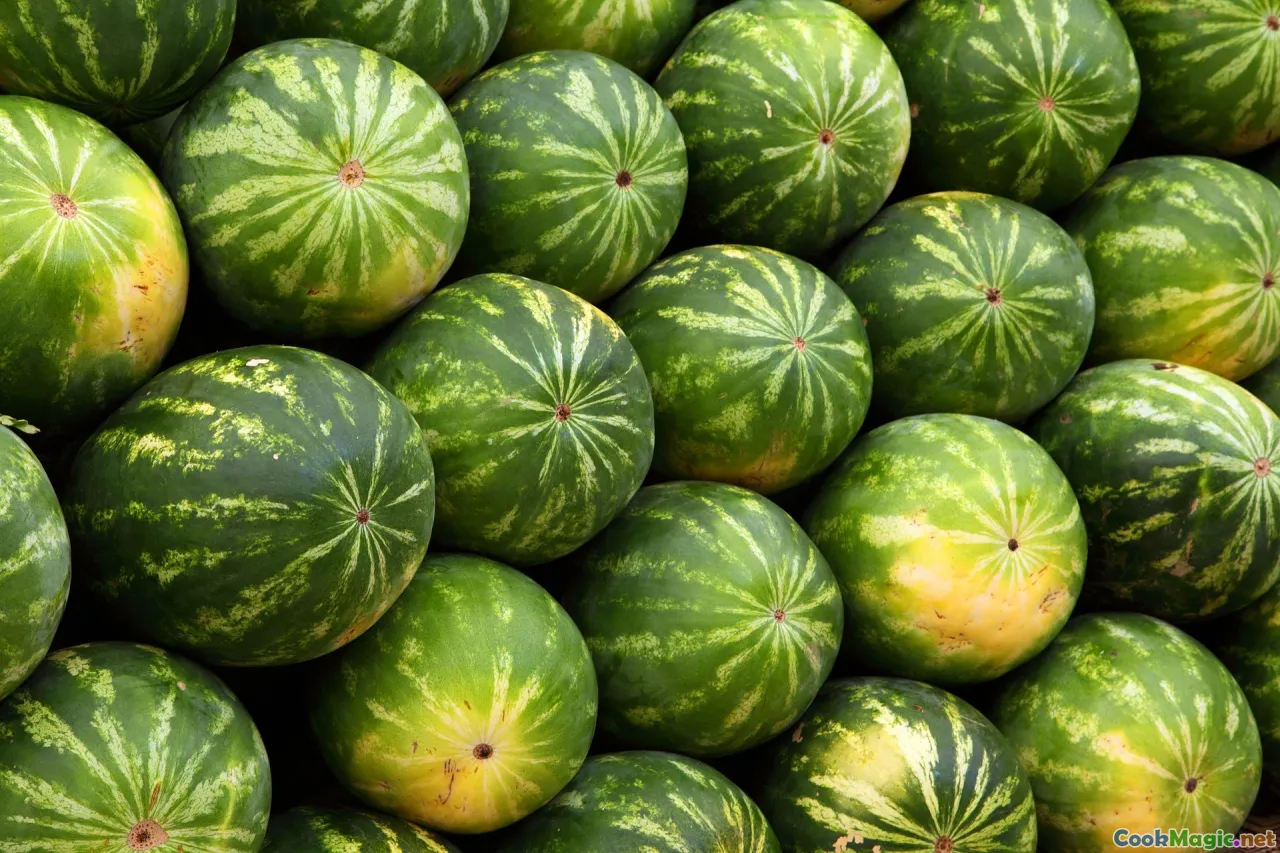
If your interest in cassowary is culinary, your education will still happen at festivals and markets, where food is embedded in song and costume.
- Goroka Show (Eastern Highlands, September): A blaze of bilas, singsing groups from far-flung communities, and a market where you can trace the garden to the plate. You won’t find cassowary meat on the grill lines, but you’ll see cassowary feathers and quills used in headdresses and talk to people who know the bird’s place at table.
- Mount Hagen Cultural Show (Western Highlands, August): Similar scope and grandeur, different textures. Markets here are vast; watch for mounds of kaukau in dusty reds and golds, bundles of greens, and the occasional smoked meat. Ask about leaf-wrapping techniques; someone will teach you which leaf ribs to avoid.
- Provincial markets: In places like Wewak or Lae, stroll the produce lines and talk to women about mumu methods. You’ll learn that the exact way a leaf overlaps, the way a stone is placed on a bundle, carries as much technique as any French sauce.
- Museums and cultural centers: The National Museum and Art Gallery in Port Moresby sometimes exhibits bone daggers, including those carved from cassowary bone. They’re careful pieces that speak to a practical, symbolic past.
Books and listening are good. Tasting and asking are better. And always, ask about conservation and law before you seek out any bush meat. The best lessons often end with a cook’s laugh and a gift of garden greens.
The Cook’s Responsibility: Memory, Method, and Respect

Long after I left that highland garden, I could call up the perfume of that mumu: hot leaf, iron, ginger, sweet potato sugar. But it’s the choreography I keep returning to—the way the bundle was constructed to save moisture, the way the first piece was given, the way everyone understood the shape of enough.
Cassowary sits in local food traditions like a keystone, heavy with obligation and flavor. If we are cooks from elsewhere, we can honor that by cooking the method even if we cannot cook the meat. Make an earth-oven package; bake it slow. Use emu or ostrich, or lean beef and duck, with ginger and greens. Hold yourself to the discipline of distribution: give a first piece away, and take the last piece for yourself only if others insist. Learn the names—muruk, mumu, bilum, kaukau, aibika—and say them with the warmth of practice.
The forest gives, but it gives on a schedule older than recipes. A good cook listens. When the leaves unroll and the steam rises, breathe in. The smell is not just of meat. It is the smell of people making room for one another, of a bird’s shadow in a garden, of the quiet decisions that turn hunger into a feast. That is the flavor you carry home.









